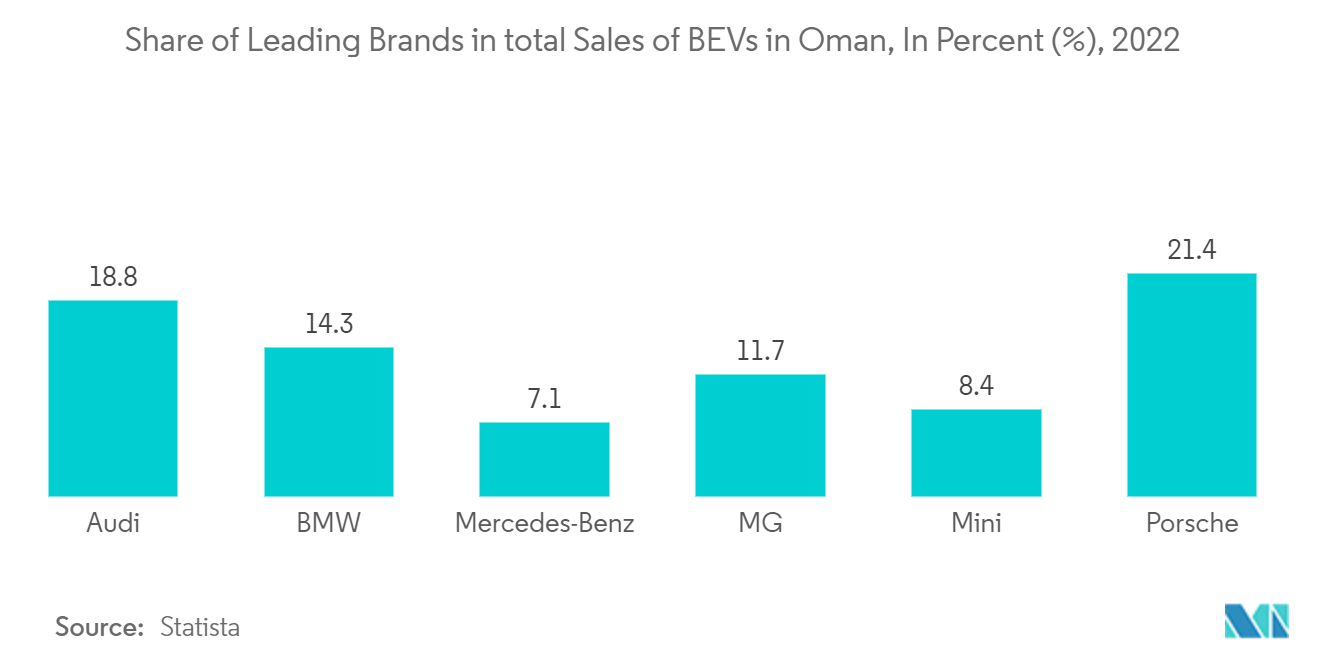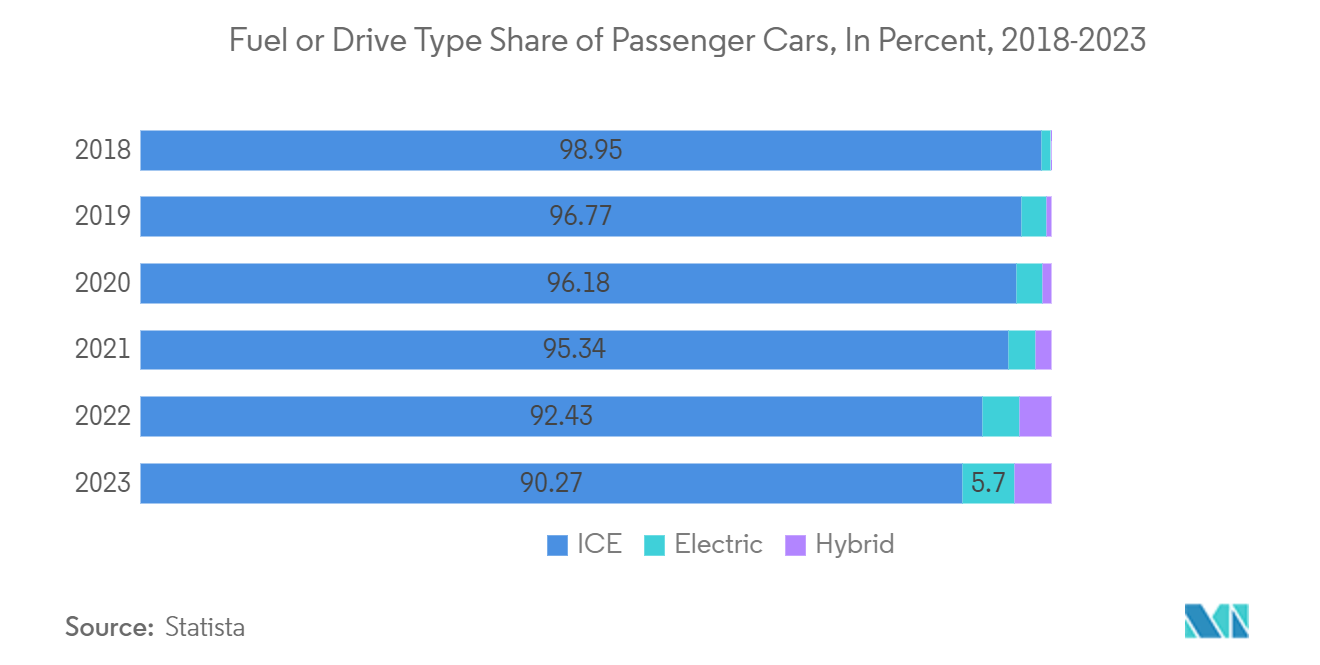Market Trends of Oman EV Industry
The Passenger Car Segment is Leading the Market
Passenger cars are the most common type of vehicle on the roads in Oman, making them a natural focal point for EV adoption. As consumers become more aware of the environmental benefits of electric vehicles and the potential cost savings that come from lower fuel and maintenance expenses, there is a growing interest in EVs as an alternative to traditional gasoline-powered passenger cars.
The Omani government has implemented incentives and policies to promote the use of EVs, with a particular focus on passenger cars. These incentives include tax breaks, subsidies, exemptions on vehicle registration fees, and preferential treatment in terms of parking and road tolls.
Moreover, the passenger car segment also benefits from ongoing advancements in EV technology, including improvements in battery performance, charging infrastructure, and vehicle design. As battery costs decline and EV range increases, electric passenger cars become more competitive with their internal combustion engine counterparts, addressing consumer concerns such as range anxiety and vehicle performance.
Companies, rental agencies, and fleet operators in Oman are increasingly considering using electric passenger cars in their fleets.
- In March 2024, Oman disclosed its plan to venture into the automotive sector with the launch of electric vehicles (EVs) by Mays, the country’s domestic electric car manufacturer. Mays is gearing up to introduce its first domestically produced model, the Alive 1, priced at USD 38,964, by the end of the year.
Overall, as the above factors continue to evolve, the passenger car segment is expected to be crucial in leading the transition toward a sustainable and eco-friendly transportation system in Oman.

The HEV Segment is the Most Prevalent Propulsion Type in Oman
Oman, Hybrid Electric Vehicles (HEVs) are emerging as a leading segment within the broader electric vehicle (EV) market owing to several factors like range and fuel efficiency, consumer acceptance, and increasing government support.
HEVs combine an internal combustion engine (ICE) with an electric motor and battery pack, offering improved fuel efficiency compared to traditional gasoline-powered vehicles. In Oman, where long distances between cities and limited charging infrastructure pose challenges for fully electric vehicles (EVs), HEVs provide a practical solution by offering extended range and reducing the need for frequent refueling.
Further, the Omani government's initiatives to promote sustainable transportation and reduce carbon emissions include incentives and subsidies for hybrid vehicles. These incentives make HEVs more affordable and attractive to consumers, further driving their adoption and market leadership in Oman.
The Ministry of Transport, Communications, and Information Technology (MTCIT) offers a 100 percent exemption from customs tax for electric vehicles, exemption from registration fees at the Royal Oman Police (ROP), and a zero percent VAT for vehicles and their spare parts.
Moreover, HEVs serve as a transitional technology for consumers who are not yet ready to fully commit to all-electric vehicles but still want to reduce their carbon footprint and fuel expenses. By offering a blend of conventional and electric powertrains, HEVs provide a practical and accessible entry point into the world of electric mobility, allowing consumers to experience the benefits of electrification without the range limitations or charging infrastructure requirements of fully electric vehicles.


